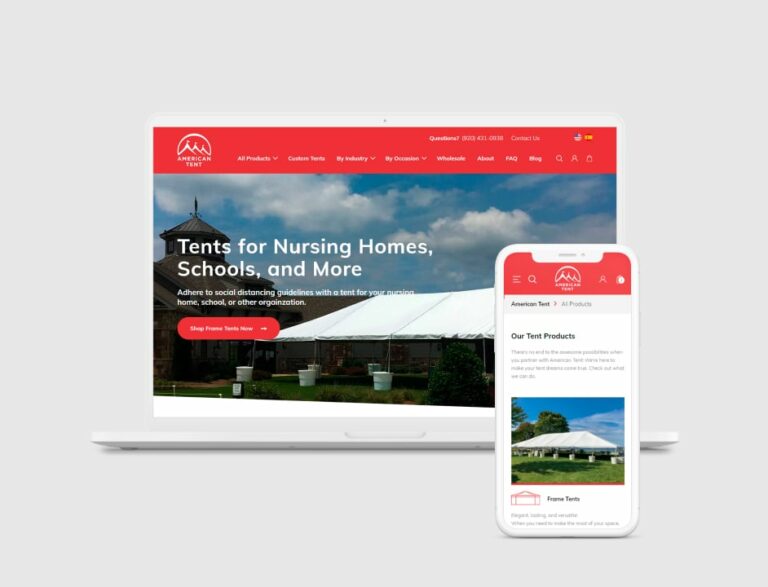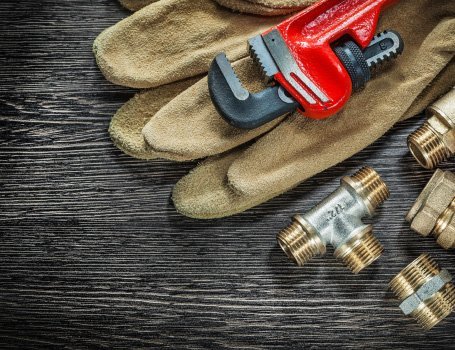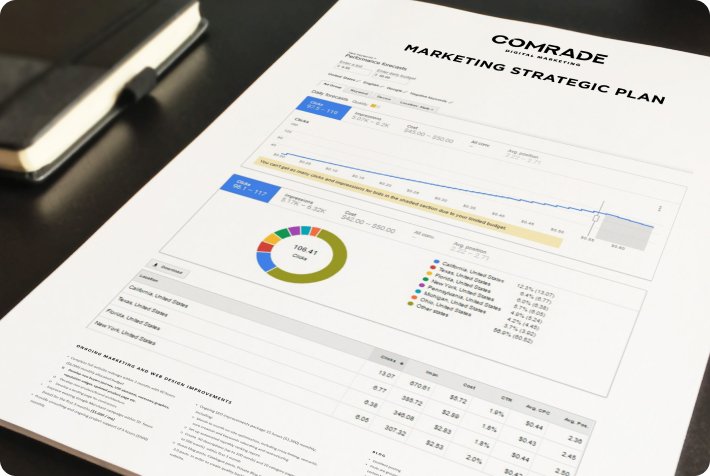
Entrepreneurs on the cutting edge of business keep to date with the latest technology and leverage as many tools at their disposal to optimize business processes. A useful and often overlooked digital marketing tool for research and development is Google Trends.
From finding complementary product verticals to increasing website traffic and updating outdated SEO keywords, Google Trends provides valuable insights to shape your eCommerce digital marketing strategies. Here’s how to use Google Trends for product research and content marketing.
What Is Google Trends and How Do You Access It?
Google Trends is a free search feature by Google that analyzes the popularity of top search queries in Google Search across various regions and languages. It uses graphs to compare search volume for common queries over different periods of time. Trends data is unbiased, anonymized, and categorized.

To start using Google Trends:
- Type “Google Trends” into Google Search. The website should come up in SERPs.
- Enter the website.
- Then, type in a keyword into the search bar or choose one of the provided examples. You can also scroll down to see general information about current trends in the US, as well as view a breakdown of how popular each term is in every state.
How to Read Google Trends
Understanding how to interpret and read Google Trends is essential for businesses looking to leverage this powerful tool for e-commerce. By analyzing and deciphering the data provided by Google Trends, you can gain valuable insights into consumer interests, market trends, and search patterns.
In this section, we will explore key techniques and tips that will enable you to effectively read and interpret the data from Google Trends, empowering you to make informed decisions and stay ahead in the competitive world of e-commerce.
A. Introduction to Google Trends interface
Let’s begin with the Google Trends interface. Familiarizing yourself with the search bar, filters, and data visualization features will enable you to extract helpful insights and make data-driven decisions.
The Google Trends interface features a user-friendly search bar where you can enter your desired keyword or topic. By typing in specific terms related to your industry or products, you can access data that reflects search interests and trends.

To refine your search and access more specific insights, you can utilize the filters available in Google Trends. These filters allow you to narrow down results by geographic location, time range, category, and search type. By adjusting these filters, you can tailor the data to align with your specific business goals and target audience.
Google Trends Data Visualization
Data visualization is a key feature of Google Trends that aids in understanding search interests and trends. The tool provides various visual representations, including line graphs and maps, to help you comprehend the data better. The line graph showcases the relative search interest over time, allowing you to identify trends and patterns.
B. Interpreting Search Interest over Time
Data means nothing if you have nothing to compare it to. One of the key aspects of reading Google Trends is understanding how to analyze search volume trends over time. This enables businesses to identify peak periods, seasonal patterns, and fluctuations in user interest. By interpreting search interest over time, businesses can align their e-commerce strategies according to trends and seasonality.
To analyze search volume trends, start by entering your desired keyword or topic into the Google Trends search bar. The search interest over time graph will show the relative popularity of the term over a specified period. Pay attention to the peaks and valleys in the graph, as they indicate periods of high or low search interest.
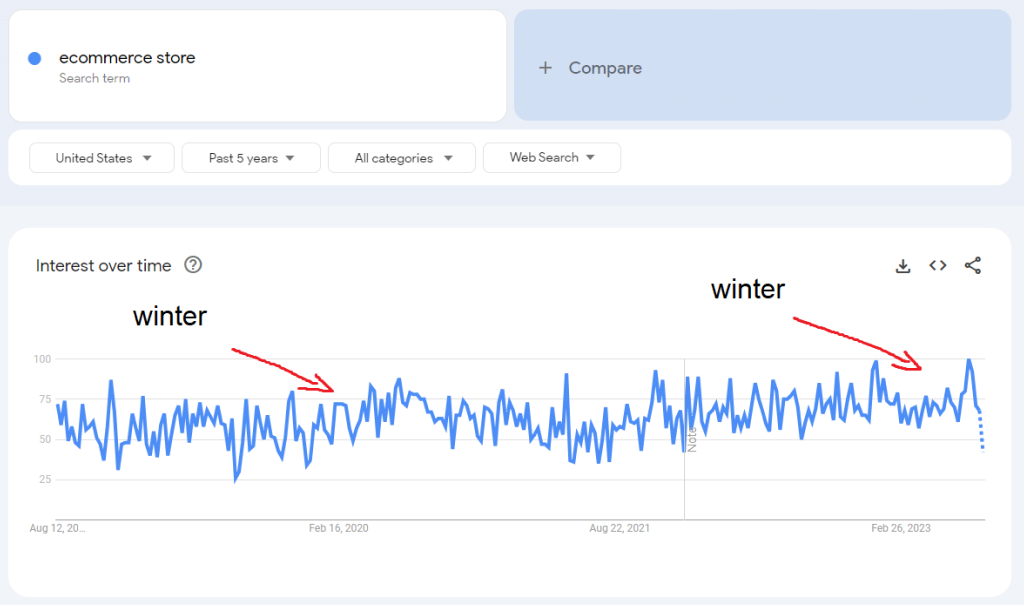
Identifying peak periods and seasonal patterns is crucial for businesses. For example, if you notice recurring spikes in search interest for a particular keyword during certain months or seasons, it suggests a seasonal demand for that product or service. By aligning your marketing campaigns, promotions, and inventory management with these peak periods, you can maximize your potential for sales and revenue.
You’ll gain valuable insights into user behavior and market trends, and the information will empower you to plan your marketing initiatives, optimize inventory management, and allocate resources effectively. Stay vigilant in tracking search volume trends to capitalize on peak periods and leverage seasonal patterns for the success of your e-commerce business.
C. Exploring Regional Interest and Geographic Data
Google Trends can also provide important information on regional interest and geographic data, allowing businesses to understand how search volume varies across different locations. By analyzing this information, businesses can tailor their e-commerce strategies to specific regions and optimize their targeting efforts.
When you enter a keyword or topic into the search bar, Google Trends displays the search interest over a time graph along with the top regions and cities where the term is most popular. The graph represents the search interest relative to the highest point on the chart. This data can help you identify regions where your product or service is in high demand or regions that show potential for growth.
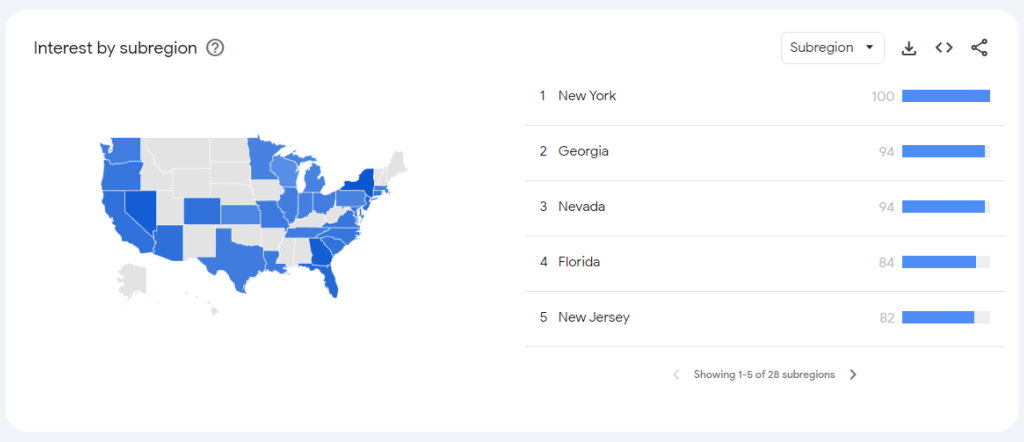
To compare interest across different regions, click on the “Regional interest” tab below the search interest over time graph. This tab provides a breakdown of the top countries, states, and cities where the search term is most popular. It displays the relative search interest for each location, allowing you to identify geographic areas with the highest interest.
D. Assessing Related Queries and Topics
One of the most beneficial features of Google Trends is the ability to assess related queries and topics, which can provide valuable insights into user search behavior and interests. By identifying top-related queries and topics, you can gain a deeper understanding of what people are searching for and tailor your e-commerce strategies accordingly.
To identify top-related queries and topics, start by entering your main keyword or topic of interest into the Google Trends search bar. Once the results page appears, scroll down to the “Related queries” and “Related topics” sections. These sections display the terms and topics that are most closely associated with your initial search term.
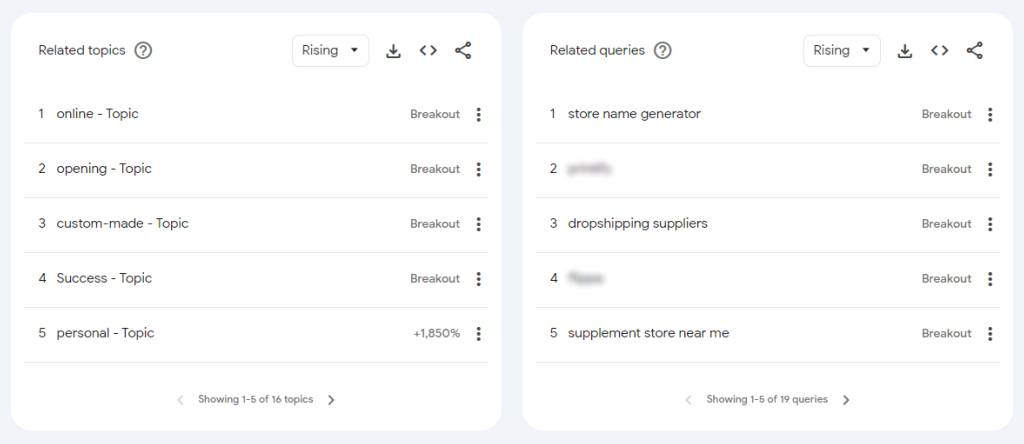
To analyze the relevance and popularity of related terms, pay attention to the search interest over time graph and the rising or declining trends of the related queries and topics. Look for keywords or topics that show consistent or increasing search interest over time, as they indicate ongoing relevance and popularity among users.
Additionally, you can compare the search interest of different related queries and topics by selecting them individually or adding them to the comparison feature in Google Trends. This allows you to assess the popularity and relative interest of various terms within your niche.
Delivering Business Results: Our Digital Marketing Case Studies
How to Use Google Trends for SEO
As mentioned, harnessing the power of Google Trends can significantly impact your SEO strategy and improve your website’s visibility. By understanding and utilizing the data provided by Google Trends, businesses can learn about relevant search trends, keyword popularity, and consumer interests.
This section will delve into effective techniques and best practices for leveraging Google Trends to enhance your SEO efforts, helping you stay ahead of the competition and drive targeted organic traffic to your website.
Google Trends’ Relevance to SEO
Google Trends is a priceless tool that holds immense relevance to SEO (Search Engine Optimization). By utilizing Google Trends, businesses can gain valuable insights into current search trends and user behavior, allowing them to optimize their website and content accordingly. Here’s how Google Trends can benefit your SEO strategy:
- Keyword research: Google Trends enables you to explore the popularity and seasonality of specific keywords over time. It helps identify trending keywords and search queries relevant to your industry, allowing you to align your content and target the right audience.
- Content planning: With Google Trends, you can discover popular topics and subjects that are currently trending. By incorporating these trends into your content strategy, you can create relevant and engaging articles, blog posts, or videos that have a higher chance of attracting organic traffic.
- Seasonal trend identification: Google Trends allows you to uncover seasonal trends related to specific keywords. This knowledge can help you tailor your content, promotions, and campaigns to align with peak search periods, maximizing your visibility and potential conversions during those times.
- Geographical insights: Google Trends provides geographic data, enabling you to understand search trends and interests based on different locations. This information can be crucial for local businesses targeting specific regions and allows for effective geo-targeting in SEO strategies.
- Competitor analysis: Google Trends can be used to compare the popularity and search interest of your brand or specific keywords against your competitors. This analysis helps identify areas where you can improve your SEO efforts and stay ahead in the market.
By utilizing this tool, you can stay informed about the latest trends, enhance your content planning, target specific regions, and gain a competitive advantage in the online landscape.
Identifying Popular Search Queries and Topics
Google Trends lets businesses explore trending topics and search queries and analyze seasonal and cyclical trends so they can optimize their content and stay ahead of the competition.
To explore trending topics and search queries, start by entering a broad keyword or topic relevant to your industry or niche in the Google Trends search bar. The tool will display a line graph showcasing the search interest over time. Below the graph, you’ll find the “Related queries” and “Related topics” sections. These sections highlight the top search queries and topics associated with your initial keyword or topic.

Analyzing seasonal and cyclical trends is essential for SEO optimization. Google Trends allows you to view search interest trends across different time frames, enabling you to identify seasonal spikes or patterns. Pay attention to recurring peaks during specific months or events. This information helps you plan your content calendar and optimize your SEO efforts by creating targeted and timely content that aligns with user interests.
By identifying popular search queries and topics in Google Trends, businesses can create relevant and engaging content that resonates with their target audience. This knowledge helps improve website traffic, user engagement, and overall SEO performance. Stay informed about trending topics and leverage seasonal trends to ensure your content is optimized for maximum visibility and reach.
Understanding Geographic and Demographic Insights
Google Trends provides valuable geographic and demographic insights that businesses can leverage for SEO strategies. By utilizing location-based data for localized SEO and identifying target audience interests and preferences, businesses can optimize their online presence and target their ideal customers effectively.
To use location-based data for localized SEO, start by entering your keyword or topic of interest in the Google Trends search bar. Below the search interest over time graph, you’ll find the “Regional interest” section. This section displays the top countries, states, and cities where the search term is most popular. Analyzing this data helps you understand which locations have the highest search interest, allowing you to tailor your SEO efforts to target those specific regions.
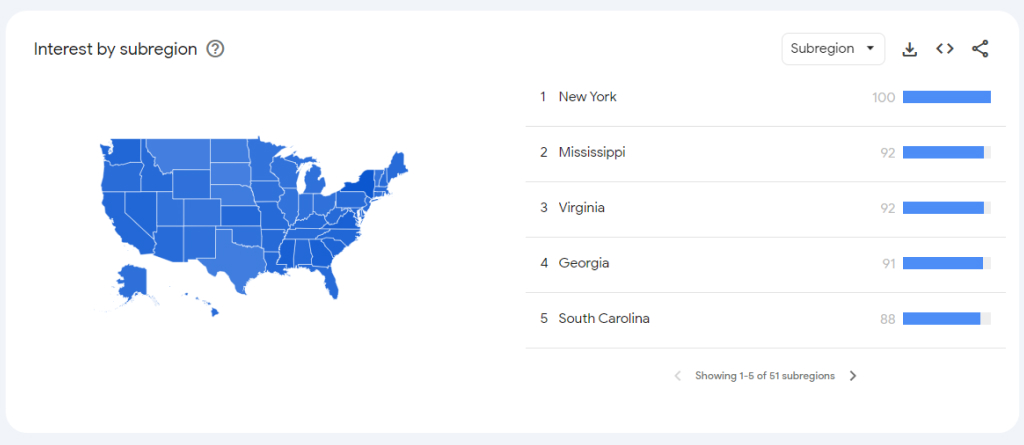
By focusing on localized SEO, you can create region-specific content, optimize your website for local keywords, and target your marketing campaigns to specific geographic areas. This targeted approach enhances your visibility and relevance in local search results, driving more organic traffic and potential customers to your website.
Discovering Related Queries and Topics
Google Trends offers valuable insights into related queries and topics that businesses can utilize for SEO purposes. By finding keyword variations, long-tail keywords, and identifying emerging or related topics, businesses can optimize their content and improve their SEO performance.
To find keyword variations and long-tail keywords, start by entering your main keyword or topic in the Google Trends search bar. Below the search interest over time graph, you’ll find the “Related queries” section. This section displays the top queries that are related to your initial search term. Analyzing these related queries helps you identify variations of your keyword and uncover long-tail keywords that can be targeted in your content.
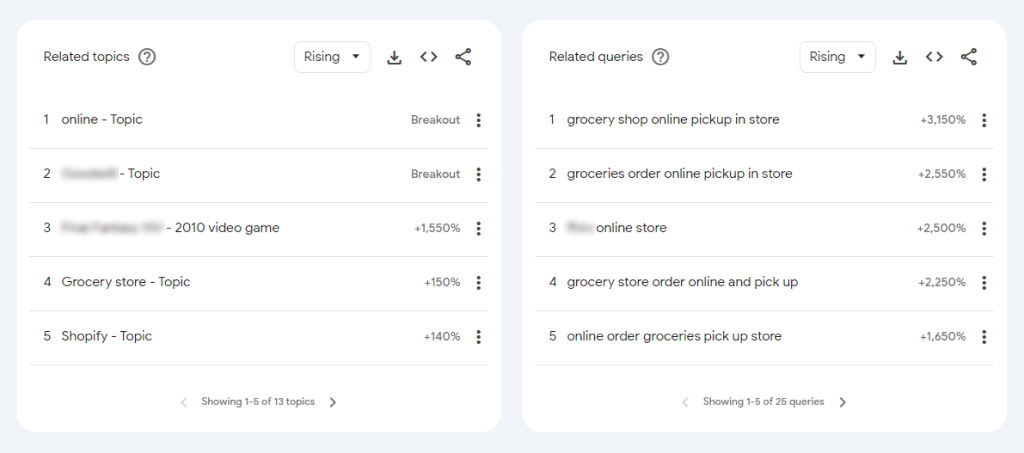
By incorporating these related queries and long-tail keywords into your website content, blog posts, and meta tags, you can improve the relevancy and visibility of your website in search engine results. Long-tail keywords often have less competition and can attract highly targeted traffic to your website.
Furthermore, Google Trends allows you to identify emerging or related topics for content creation. In the “Related topics” section below the related queries, you’ll find the top topics associated with your main keyword. These topics represent the broader themes or subjects that users are interested in alongside your main keyword. Incorporating these related topics into your content strategy helps you create relevant and engaging content that aligns with user interests.
By discovering related queries and topics in Google Trends, businesses can enhance their SEO strategies by targeting keyword variations, long-tail keywords, and emerging topics. This knowledge enables you to optimize your content, attract relevant traffic, and stay ahead of the competition.
Monitoring and Comparing Search Terms
Google Trends offers businesses the ability to monitor and compare the performance of specific keywords, providing valuable insights for SEO strategies. By tracking keyword performance and comparing multiple search terms, businesses can refine their SEO efforts and stay competitive in the ever-changing digital landscape.
To track the performance of specific keywords, start by entering the keyword of interest in the Google Trends search bar. The search interest over time graph will showcase the relative popularity of the keyword over a specified period. You can set the time range to track the performance of the keyword over weeks, months, or years. Monitoring this data helps you understand the fluctuations in search interest for your target keyword.

By tracking keyword performance, you can identify trends, spot seasonality, and adjust your SEO strategies accordingly. If you notice a decline in search interest for a particular keyword, it may be time to explore alternative keywords or adjust your content strategy to target more popular terms.
Furthermore, Google Trends allows you to compare multiple search terms for insights. You can enter multiple keywords or phrases in the search bar and view their relative search interest on the same graph. This feature enables you to compare the performance of different keywords within your industry or niche. By comparing search terms, you can identify which keywords are gaining traction, which ones are declining, and adjust your SEO efforts accordingly.
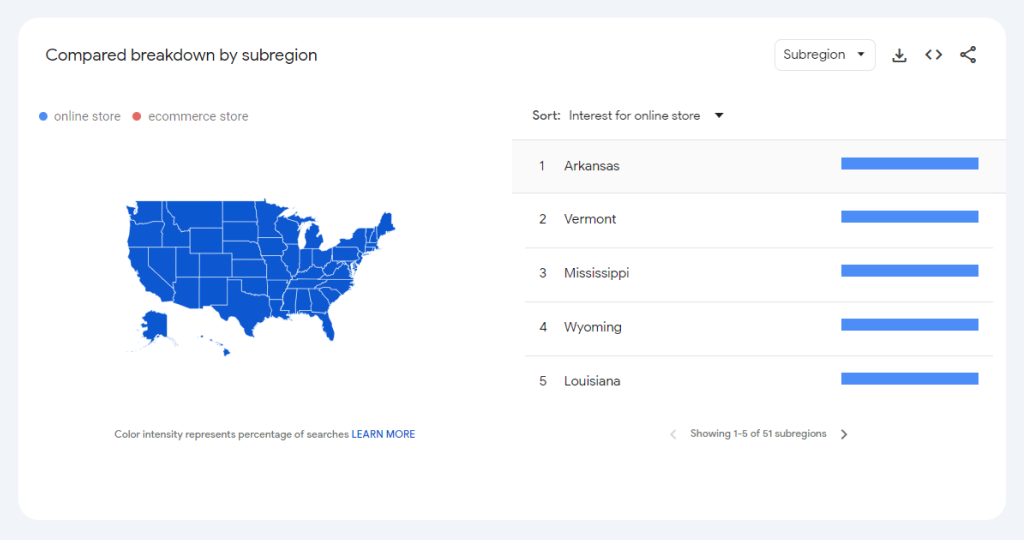
By monitoring and comparing search terms in Google Trends, businesses can stay informed about keyword performance and make data-driven decisions for their SEO strategies. This knowledge allows you to optimize your website content, target trending keywords, and maximize your online visibility.
Comrade Digital Marketing Agency can help you with the above if you’re unsure how to go about it. Schedule a free consultation.
10 Google Trends Tricks for Businesses and Entrepreneurs
Here is how we utilize Google Trends to improve search visibility and generate more traffic to eCommerce websites.
1. Finding Niches with Google Trends
Because everyone is already going after all the major keywords relevant to your business and because the eCommerce markets are generally oversaturated, discovering new niches and keywords with Google Trends can be highly rewarding.
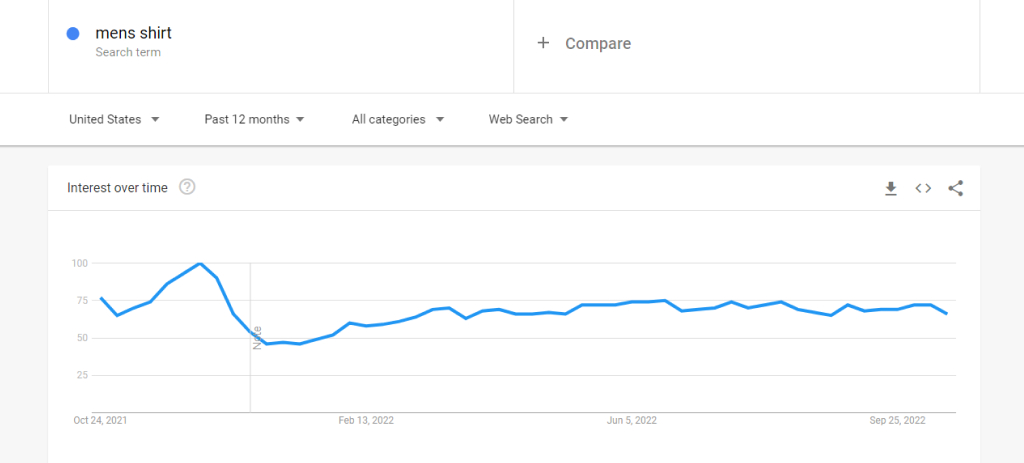
What makes the use of Google Trends so powerful is that it can show you if a niche is trending or evergreen and give you keyword and product ideas. Finding a niche perfectly suited to your business can help you differentiate your brand, reduce competition and increase profits.
2. Discovering Relevant Product Categories
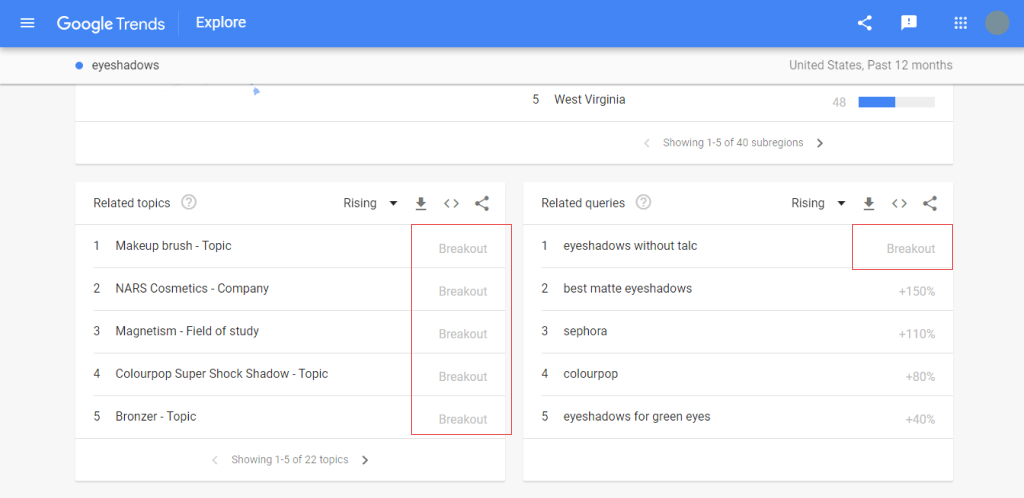
“Breakout” in Google trends means a sudden and significant increase in search interest
Considering expanding your product offerings into other verticals? The first thing you should do is Google product trends. When you search for a product term in Google Trends, product searches related to your term pop up at the bottom of the page. So, let’s say you’re a handbag eCommerce store.
With Google Trends, you can find out trending colors, materials, and other product innovations, as well as how much interest has increased for related searches in a selected time frame.
For the most searched-related queries and topics, you’ll see a percentage of the term’s growth. If you see “Breakout” instead of a percentage, it means the search term has grown by more than 5000% according to Google Trends. Best-selling Google trending products are also easy to find, providing an opportunity to innovate on existing handbags presently in the market.
3. How to Use Google Trends for Keyword Research
Google Trends for eCommerce offers the following benefits for keyword planning and research:
- Keyword trend research
- Seasonal keyword trend analysis
- Keyword comparison
- Country-specific keyword
The website assigns a numerical value to keywords ranging from zero to 100. Obviously, 100 represents peak popularity (The higher the number the more searches occur for that keyword.) Keep in mind that while keywords hitting close to or at the 100 level matter, often the most pragmatic and sustainable ones are those with stable growth or steady positions. While they appear less popular, these keywords represent topics consistently searched for year-over-year without much decline.
4. Writing Content about the Current Global and Local Trends
On the homepage of Google Trends, you’ll find a section for trending searches. These are the hottest topics of the moment. While most trends are short-lived, you can leverage them on , especially when buzzworthy trends tie into your business niche.

An excellent example of newsjacking (creating content based on current news) was when the meditation app Calm ramped up advertising leading up to and on the night of the last US elections. Drawing from this example, you can see how Google Trends can inform marketing tactics, especially when it comes to creating quick content pieces that ride on the coattails of Google trending events.
5. Find a Niche Specific to a Location
When it comes to digital marketing, we target audiences based on niche topics by region. We know a target audience in Chicago is different from an audience in LA. For example, at the time of writing, the term “silver jewelry” is more popular in New Jersey than in New York. So, what does this mean?
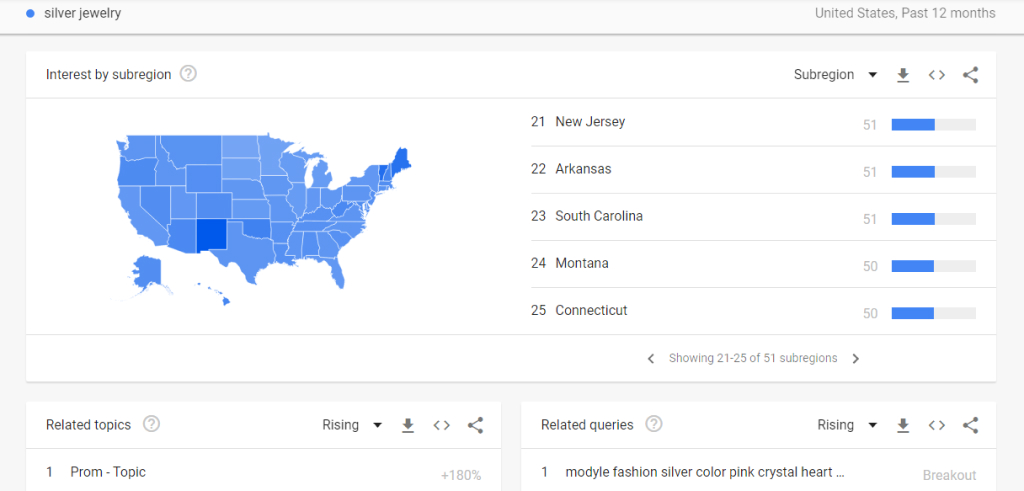
If you were to create a pay-per-click ad for “silver jewelry,” you’d be better off targeting New Jersey than New York, since there’s growing interest there. This is one example of how to use Google Trends for research, not just in terms of finding out which products are popular but also to determine which regions will bring the most sales.
6. Promoting Your Business During the Seasonal Trends
If your business is season-dependent or sells products or services that are, you can quickly estimate peak sales times in Google Trends. This data can be put to use in two ways:
Create relevant content to coincide with the peak. For example, if you’re a chocolatier, you’ll likely want to emphasize specials during Valentine’s Day.
Optimize relevant content before the peak. So, if you’re a snow removal company, you’ll want clients to be aware of your services before winter. Therefore, you might launch an advertising campaign during the fall.
Essentially, identifying seasonal trends allows you to create and promote content at the right time.
7. Google Shopping Trends
Say you’re selling gym equipment. You could run a search in Google Trends for the term “gym equipment” and filter your results by looking specifically for people who searched in Google Shopping.
This can help you narrow down to searchers who would likely be interested in purchasing products because the keywords they use reveal a specific intention around gym-related products.
Google Trend shopping research offers in-depth knowledge that can deeply inform your sales strategy. It allows you to customize your inventory and marketing offers based on what consumers are looking for, whether it’s seasonally or all year round.
8. Using Google Trends to Update Your Content
Creating content that converts and filing your editorial calendar can be challenging, especially once you’ve already addressed FAQs. Utilizing Google Trends can be a good place to widen your research and help you identify topics your target audience actually wants to read about.
You can literally enter any broad topic in the search bar, and be shown a list of content ideas relevant to you. Producing topical content consistently retains customers. Search engines also love fresh content and rank websites that publish regular, relevant content higher. Sometimes, you don’t even have to write new content from scratch, you can just update what you already have, saving time and money.
9. Analyzing the Competitors with Google Trends
Although not the deepest form of competitive analysis, Google Trends does provide a good, general overview of how often your competitor’s products, brand, or services are being searched for on Google’s search engines. You can also add your company name to compare who customers search for more.
Google Trends lets you compare up to five competitors to see who is growing at a faster rate. If you’re leading, capitalize on regions where your brand enjoys popularity to get the most bang for your marketing dollar. If you’re behind, you can use the data to improve your marketing campaigns.
10. YouTube Video Marketing
Over 50% of consumers want to see videos from their favorite brands. The challenge, of course, is figuring out what types of videos will get the most views. Google Trends is a good resource to understand how consumers’ video-watching habits vary.
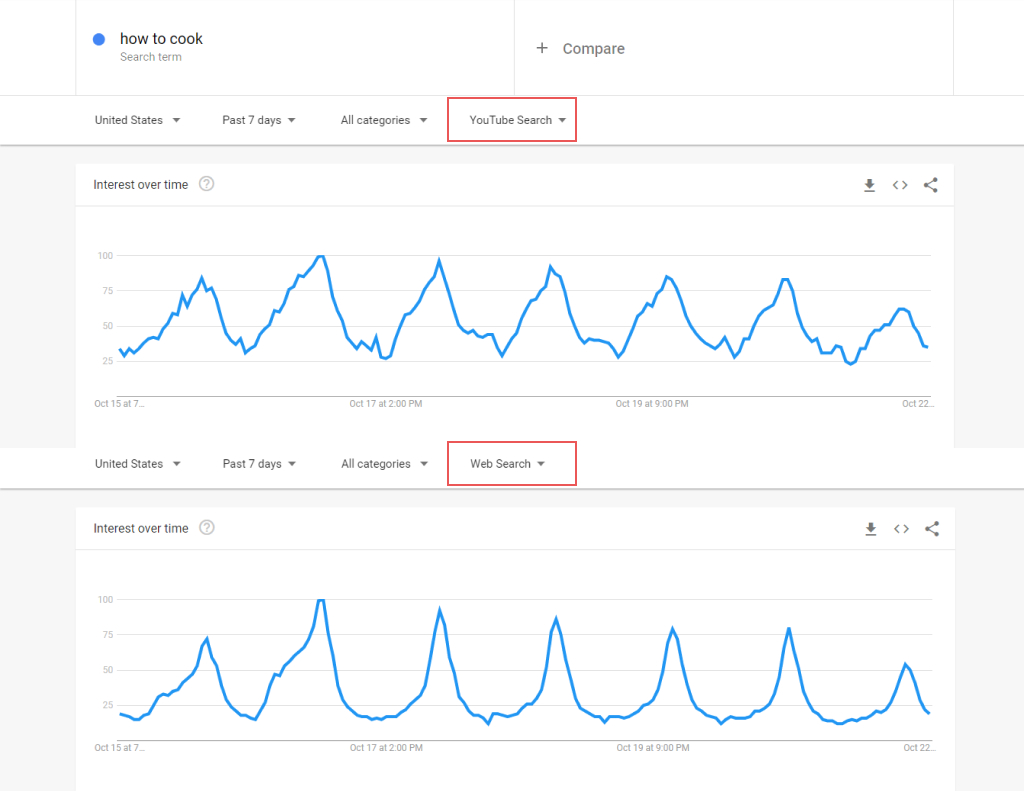
For example, if you search “how to cook,” on Google Trends, you’ll notice it has more weekly searches on YouTube than on Google Search. Therefore, if you’re a home or kitchen appliance store, for instance, you’ll immediately realize it’s better to create video marketing content. This useful research process helps you adapt content based on the topics and channels.

Improve Your Ecommerce Marketing with Google Experts
It’s pretty clear that Google Trends can help your eCommerce business build a powerful online presence that achieves your goals. Now that you know how to leverage it for marketing, product, and content creation, you’ll want to use it in tandem with other marketing tools like Google Ads and Google Analytics to get ahead of your competition.
Alternatively, you can hire a professional eCommerce digital marketing company like us! We’ve helped many start-ups and established businesses improve their digital marketing and increase their profits. Contact our marketing experts at Comrade Digital Marketing to get started with a free digital marketing audit and learn your strengths, weaknesses, and next steps.

